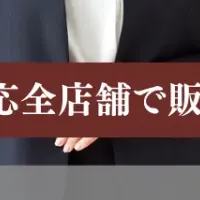
The Iron Ore Market's Transformation: Projected Growth Driven by Steel Demand and AI Technologies
The Iron Ore Market's Future: Growth and Transformation
The global iron ore market is set to witness a remarkable growth trajectory, projected to expand by USD 60.9 billion between 2025 and 2029. This anticipated growth comes amid a surge in demand for robust iron ore and steel, particularly from emerging economies such as China and India, where infrastructural developments are accelerating.
Factors Fueling Growth
Technavio's report indicates that the market is expected to grow at a CAGR of 3.3% from 2025 to 2029. The increasing consumption of high-strength iron ore is a primary driver behind this expansion, as industries prioritize utilization of durable materials. The trend towards economic recovery and growth in markets like China is pivoting the focus on stainless steel, which is crucial for various applications in construction, transportation, and manufacturing sectors.
Emerging Markets and Demand
China is currently the leading producer of crude steel globally, significantly impacting iron ore demand. The country’s rapid industrialization has led to increased steel consumption in infrastructure projects, which directly correlates to heightened iron ore needs. On the other hand, India is poised to become the second-largest crude steel producer by the forecast period, with its automotive and construction industries gearing up for expansive growth. The Indian government’s push for enhanced infrastructure through initiatives like the Make in India campaign is expected to further drive iron ore demand.
The Role of AI
Artificial Intelligence (AI) is pivoting market dynamics, redefining traditional practices and enhancing efficiency across the supply chain. Utilizing AI technologies, companies can optimize their mining operations, predict equipment failures, and improve automation processes, leading to significant reductions in operational costs. Technavio's insights show that initial investments in AI may be substantial; however, the long-term benefits will outweigh these costs by improving productivity and reducing waste.
Market Challenges
While growth projections are optimistic, the iron ore market faces notable challenges. One significant issue is the high capital investment required for mining operations, including the procurement of advanced machinery and compliance with stringent regulations. Additionally, environmental concerns surrounding mining practices and the nonrenewable nature of iron ore necessitate a shift towards sustainable methods. The industry must address challenges such as mining waste, air quality issues, and the ecological impacts associated with iron extraction.
Sustainability Efforts
To reconcile the pressing demand for iron ore with environmental concerns, there is a growing movement within the industry advocating for responsible mining practices. Companies are increasingly harnessing technologies to minimize their environmental footprint while ensuring compliance with regulatory standards. Innovations in processing, like the conversion of tailings into useful materials and advancements in waste management and recycling technologies, are essential for sustainable growth.
Diverse Applications
The versatility of iron ore applications stretches far beyond standard uses. It is instrumental in various industries, from producing pigment iron for paints to serving as catalysts in petrochemical processes. The ongoing transition to renewable energy also presents new avenues for iron ore utilization, particularly in applications such as hydrogen gas production and energy storage.
As the market evolves, satisfying the diverse requirements of industries reliant on steel—such as automotive, construction, and manufacturing—will be critical. The utilization of various forms of iron ore, including fines, lumps, pellets, and HBI/DRI, reflects the ongoing evolution of the market.
Conclusion
In conclusion, the global iron ore market's future appears robust, underpinned by escalating demand driven by economic recovery and innovative technological advancements. Stakeholders must navigate the intertwining challenges of investment, environmental sustainability, and market competition to maximize their growth potential. Embracing AI technologies will play a pivotal role in shaping the market landscape, ultimately steering the industry towards a more sustainable and efficient future.
Topics Consumer Products & Retail)










【About Using Articles】
You can freely use the title and article content by linking to the page where the article is posted.
※ Images cannot be used.
【About Links】
Links are free to use.